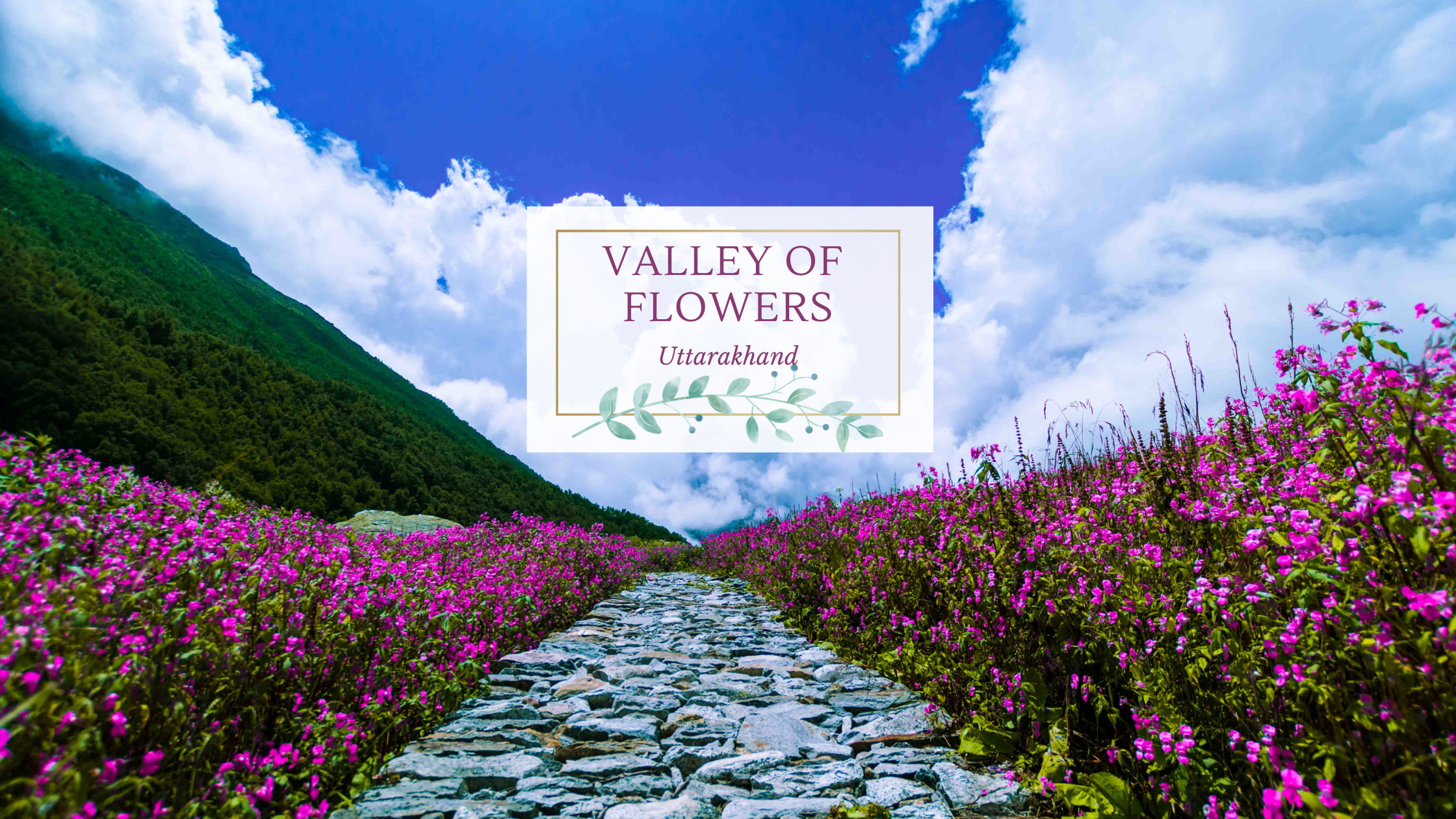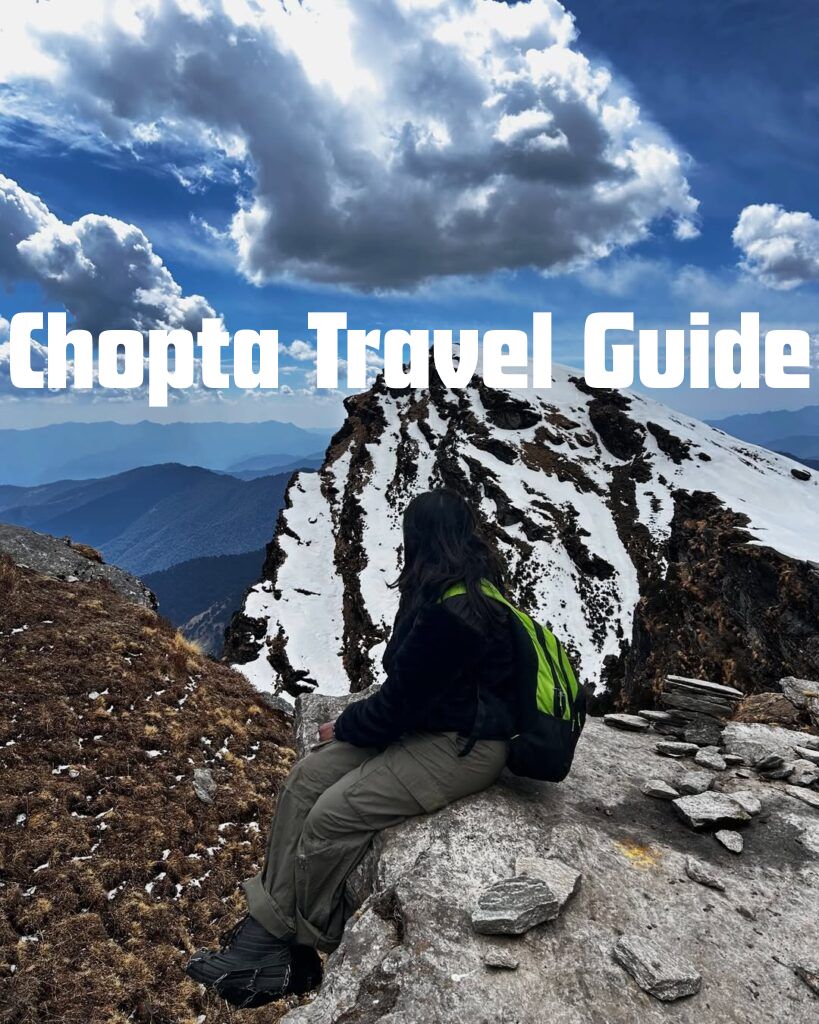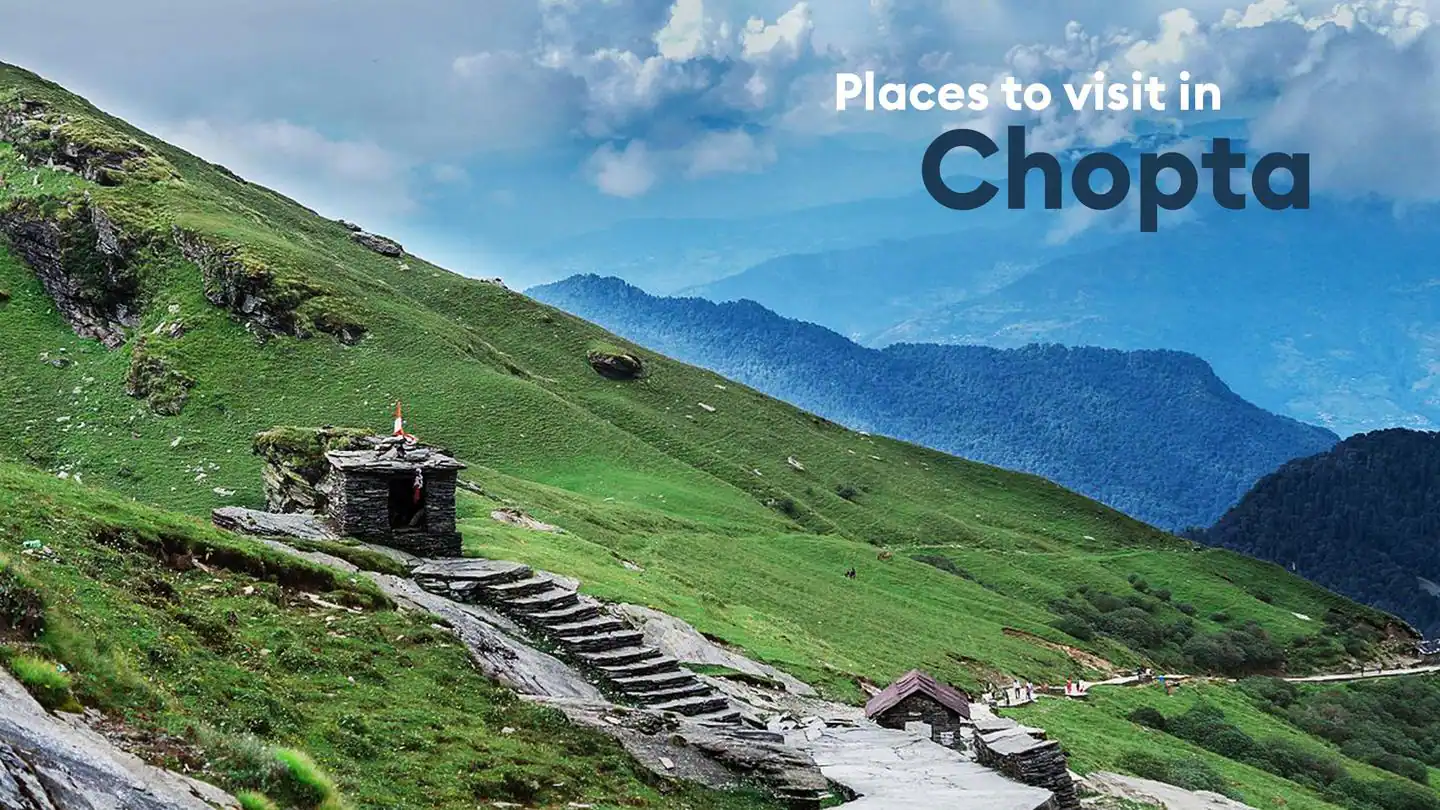Best Time To Visit Valley Of Flowers: Scenery, Preparation Tips, And Essentials
Published on July 17, 2025
Valley of flowers tour package, The Valley of Flowers in Uttarakhand is a stunning natural wonder filled with vibrant meadows, snow-clad peaks, and rare Himalayan flora. This UNESCO World Heritage Site is a dream trek for nature lovers, photographers, and adventure seekers. To enjoy this magical place at its best, knowing when to visit, how to prepare, and what to carry is essential. This guide breaks down everything you need, including travel options, packages, and scenic highlights.
Best Time to Visit Valley of Flowers
Mid-July to Mid-September is the best time to visit the Valley of Flowers National Park.
During this monsoon window, the valley comes alive with a carpet of more than 300 species of wildflowers, crystal-clear streams, and cool mountain air.
-
July: The early monsoon triggers the blooming season. You’ll see fresh wildflowers in every shade.
-
August: The peak bloom! This is when the valley is at its most colorful and vibrant.
-
September: Late bloomers, fewer crowds, and a serene experience with mild weather.
This period also coincides with several fixed departures from major cities under Valley of Flowers trek packages.
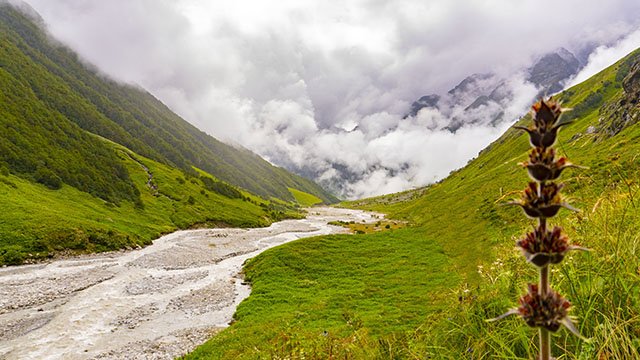
Step by Step to Paradise: Your Day-Wise Itinerary for the Ultimate Himalayan Escape
Day 1: Arrival in Rishikesh & Drive to Govindghat / Pipalkoti
- Arrive at Rishikesh , the yoga capital of the world, known for its serene vibes and spiritual energy.
- After breakfast, meet your tour representative at The 60s Cafe (The Beatles Café) — a nostalgic start point of your Himalayan journey.
- Begin your scenic drive towards Govindghat / Pipalkoti (approx. 280 km, 8–9 hours), passing through charming hill towns like Vikasnagar, Chinyalisaur, and Joshimath .
- En route, enjoy breathtaking views of snow-capped peaks, deep gorges, and flowing rivers like the Alaknanda and Pindar .
- On reaching Govindghat, check into your pre-booked accommodation.
- Rest and relax for the night, preparing for the trekking days ahead.
Overnight Stay: Govindghat / Pipalkoti
Day 2: Trek from Govindghat / Pipalkoti to Ghangaria (14 km / 7–8 hrs)
- Post an early breakfast, begin your ascent towards Ghangaria , a key base camp for trekkers heading to both the Valley of Flowers and Hemkund Sahib .
- The trail follows the Bhyundar Valley , winding through dense forests of rhododendron and oak, alongside the roaring Pushpawati River .
- Cross several small wooden bridges and witness cascading waterfalls and natural hot springs along the way.
- Reach Ghangaria , a quaint mountain village nestled between two glacial streams, and check into your guesthouse or dormitory.
- Spend the evening exploring the surroundings or relaxing in this tranquil setting.
Overnight Stay: Ghangaria
Day 3: Full-Day Exploration of Valley of Flowers
- Rise early and head out for the much-awaited visit to the Valley of Flowers , located about 3 km from Ghangaria.
- As you enter this UNESCO World Heritage Site, be mesmerized by a vibrant carpet of wildflowers in every shade imaginable — from dazzling reds and purples to soft pinks and yellows.
- Walk through the valley, soaking in the fragrance of alpine flora, and capturing stunning photographs of rare blossoms and butterflies fluttering around.
- Visit the Pushpavati River and enjoy a peaceful sit-down amidst nature.
- Return to Ghangaria in the afternoon for some rest.
- Optional: Visit the nearby Sindhu Ghati Park , another floral attraction slightly off the main trail.
Overnight Stay: Ghangaria
Day 4: Trek to Hemkund Sahib & Back to Ghangaria
- Wake up early and set off for the holy Sri Hemkund Sahib Gurudwara , situated at an altitude of 4,329 meters.
- The trek is steep and moderately challenging (approx. 6 km one-way), passing through rocky terrain and pine forests.
- Upon reaching the gurudwara, experience the spiritual serenity and marvel at the pristine glacial lake beside it.
- Spend time in prayer or simply absorbing the majestic views of surrounding peaks like Mount Nanda Devi .
- Descend back to Ghangaria in the afternoon, where you can unwind and prepare for the return journey.
Overnight Stay: Ghangaria
Day 5: Descent Trek from Ghangaria to Govindghat / Pipalkoti
- Today marks the end of your trekking days. Start your descent back to Govindghat / Pipalkoti .
- The downhill trek (approx. 14 km) is relatively easier and allows you to enjoy the panoramic views without the effort of climbing uphill.
- Take breaks at scenic spots, reflect on your Himalayan journey, and click last-minute pictures.
- On reaching Govindghat, board your waiting vehicle for a relaxing drive back to Rishikesh .
- Overnight halt en route or continue driving depending on time and road conditions.
Overnight Stay: On the way or reach Rishikesh late night (depends on traffic)
Day 6: Transfer to Rishikesh & Departure
- After a refreshing night’s sleep, proceed towards Rishikesh , concluding your soul-stirring Himalayan adventure.
- On arrival in Rishikesh, you may choose to explore local attractions like Lakshman Jhula , Triveni Ghat , or enjoy a peaceful session of meditation or yoga.
- Later, transfer to your onward destination — whether it’s the airport, railway station, or bus stand.
End of Tour
Inclusions:
- Transportation from Rishikesh to Rishikesh.
- 2 Nights stay in Govindghat / Pipalkoti.
- 3 Nights stay in Ghangaria.
- 10 Meals - 5 Breakfasts & 5 Dinners (Veg).
- Toll Tax & Parking.
- Local exploration as per the itinerary.
- Experienced Trip Captain throughout the trip.
Exlusions:
- Any personal expenses ( laundry, shopping, tips, snacks, etc ).
- Any adventure activities not mentioned (e.g.,snow rides , skiing, etc.)
- Anything not mentioned in the itinerary.
- Hot water availability (not guaranteed in remote areas).
- Any kind of entry tickets of forests fees.
- Meals/Drinks other than those mentioned in inclusions.
- 5% GST (Goods and Services Tax).
- Travel insurance
- 4*4 vehicle charges for snow rides (if required during heavy snow)

Valley of Flowers Trek Distance & Route Breakdown
The Valley of Flowers trek distance is about 38 km round-trip, starting from Govindghat and going up to the valley and back. Here's a basic outline:
-
Rishikesh to Valley of Flowers distance: Approx. 270 km
-
Govindghat to Ghangaria: 13 km trek or mule ride
-
Ghangaria to Valley of Flowers: 3.5 km one-way trek
-
Ghangaria to Hemkund Sahib (optional): 6 km steep trek
Most Valley of Flowers guided tours offer this complete route in 4 to 6 days, depending on the package.
How to Reach Valley of Flowers
Reaching the valley is a multi-step journey but very doable with good planning or a tour package.
By Road:
-
Start from Rishikesh, Haridwar, or Dehradun via shared taxi or private vehicle to Govindghat
-
Distance from Rishikesh: 270 km
-
Distance from Haridwar: 290 km
-
Govindghat is the base where most Valley of Flowers trek packages begin
By Train:
-
Nearest railway stations: Haridwar and Rishikesh
-
From here, take a taxi/bus to Govindghat
By Air:
-
Nearest airport: Jolly Grant Airport (Dehradun)
-
From airport: Drive/taxi to Govindghat via Rishikesh
If you’re opting for a Valley of Flowers tour package from Delhi, Rishikesh, Haridwar, or Mumbai, travel arrangements are usually included.
Must-See Scenery in the Valley
-
Alpine meadows covered in bright blue poppies, cobweb orchids, and Brahma Kamal
-
Flowing Pushpawati River
-
Distant views of Zanskar & Garhwal ranges
-
Misty mornings and golden sunsets across the flowers
These sights are at their most photogenic in August, during the height of the bloom.
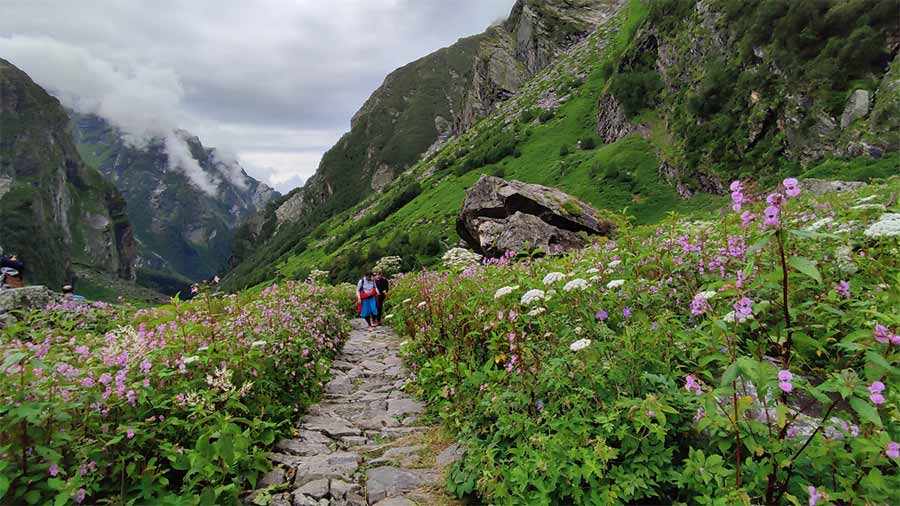
Essentials to Carry for the Trek
To make your trek smooth and comfortable, pack smart:
-
Sturdy trekking shoes
-
Waterproof jacket & warm layers
-
Rain poncho/umbrella
-
Power bank & torch
-
Reusable water bottle
-
Basic first-aid
-
Sunscreen & cap
-
Government ID for forest entry
Most Valley of Flowers guided tours will provide a full list of essentials when you book.
Couple Special: Valley of Flowers Tour Package for Couples
Nature-loving couples will find the Valley of Flowers tour package for couple an ideal romantic getaway. Expect:
-
Private stays in cozy guesthouses at Ghangaria
-
Personal trek guide if required
-
Bonfire evenings (if weather permits)
-
Flexible itinerary for leisure and relaxation
Valley of Flowers vs Valley of Flowers Kashmir
While Valley of Flowers in Uttarakhand is known for its monsoon blooms, Valley of Flowers Kashmir has its own high-altitude charm. But accessibility, affordability, and safety make Uttarakhand's Valley of Flowers a better option for most Indian travelers.
Why Choose a Guided Tour?
-
Local expertise and support
-
Pre-arranged permits and stay
-
Safety and health support
-
Less planning, more enjoying
Popular choices include:
-
Valley of Flowers tour package from Delhi
-
Valley of Flowers trek packages from Rishikesh or Haridwar
-
Fixed departure Valley of Flowers guided tours for budget travelers

Friendly Budget Booking – Just ₹9500 with TourMyHoliday
Explore the valley in style – without hurting your wallet!
Get our Valley of Flowers tour package starting from just ₹9500 per person, which includes:
-
Transport from Rishikesh/Haridwar
-
Twin-sharing accommodation
-
All meals during trek days
-
Trek permits and local guides
Ideal for students, families, and couples alike – it’s a complete experience at a pocket-friendly price!
Why Choose TourMyHoliday?
-
✅ Trusted Trek Experts
-
✅ Personalized Itineraries
-
✅ Fixed Departures & Group Discounts
-
✅ Local Guides and Authentic Stays
-
✅ Budget-Friendly & Couple-Friendly Packages
When Nature Wakes Up: The Ideal Season to Explore the Valley of Flowers Trek
If you’re dreaming of vibrant meadows, blooming Himalayan flowers, and soul-refreshing treks, timing is everything. The ideal season to do the Valley of Flowers trek is mid-July to mid-August, when the valley is in full bloom and turns into a magical carpet of color.
During this short window of time, the Valley of Flowers National Park in Uttarakhand wakes up after months of snow. As the snow melts in June, wildflowers start to emerge, but it’s in July and August that the valley explodes with thousands of species in full blossom — from Himalayan blue poppies to rare orchids and primulas. This is the best time to experience the raw beauty of the Valley of Flowers trek and capture nature at its finest.
While June offers pleasant weather and green surroundings, and September marks the end of the blooming season with a golden-brown hue, the core flowering season is mid-July to mid-August, especially for those seeking the classic, vibrant views this UNESCO World Heritage Site is known for.
To make the most of your journey, pair your visit with a Valley of Flowers tour package from Delhi, Rishikesh, or Haridwar, depending on where you're starting. The trek is around 38–40 km roundtrip from Govindghat, and packages like the Valley of Flowers trek package make it easy to enjoy the scenery without the stress of planning.
Whether you’re a couple looking for a romantic escape with the Valley of Flowers tour package for couple, or a group chasing nature’s hidden treasures, make sure to travel when the blooms are at their brightest. This season isn’t just ideal—it’s essential to truly witness the breathtaking charm of the Valley of Flowers, Uttarakhand.
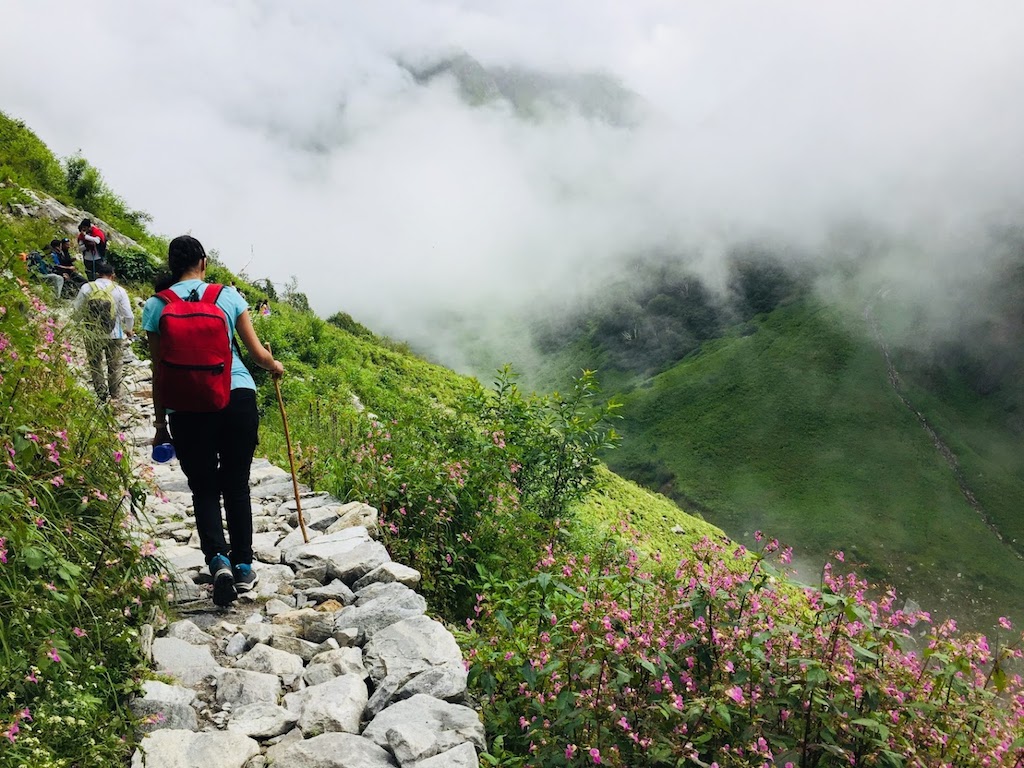
Trekking Through Beauty: How Difficult is the Valley of Flowers Trek?
The Valley of Flowers trek may be a journey through heaven-like landscapes, but it still demands a little effort. If you're wondering about the difficulty level of the Valley of Flowers trek, the good news is—it’s a moderate trek, ideal for beginners who are reasonably fit and eager to explore the Himalayas.
The trek spans around 38–40 km (roundtrip), beginning from Govindghat to Ghangaria, and then onward to the Valley of Flowers National Park. The trail includes gradual ascents, rocky patches, narrow paths beside streams, and a few steep sections. However, it doesn't require any mountaineering experience or technical skills. Anyone with basic stamina and a love for adventure can complete it.
Here’s what makes the trek manageable yet thrilling:
-
Daily Walking Time: You’ll walk 6–10 km a day, depending on your pace.
-
Elevation: The highest point you’ll reach is around 3,658 meters (12,000 ft) inside the Valley.
-
Trail Conditions: Paths can get slippery during monsoon, especially in July and August (the best bloom season), so good trekking shoes are a must.
-
Altitude: You may feel mild shortness of breath, so take it slow, hydrate well, and rest when needed.
Despite being a UNESCO World Heritage Site and home to over 600 species of alpine flowers, this trek is surprisingly beginner-friendly. Many trekkers combine it with the nearby Hemkund Sahib trek, which is steeper and more intense, but the Valley of Flowers trail alone is easier in comparison.
You can make your journey even smoother with a well-organized Valley of Flowers trek package. Whether you're choosing a Valley of Flowers tour package from Delhi, Rishikesh, or Haridwar, most packages include guides, meals, and stays—making the trek safer and hassle-free.
So, is the Valley of Flowers trek difficult? Not really. It’s a perfect balance of scenic pleasure and light adventure. With proper planning and the right support, you’ll return not just with tired feet, but with a heart full of colors and memories.
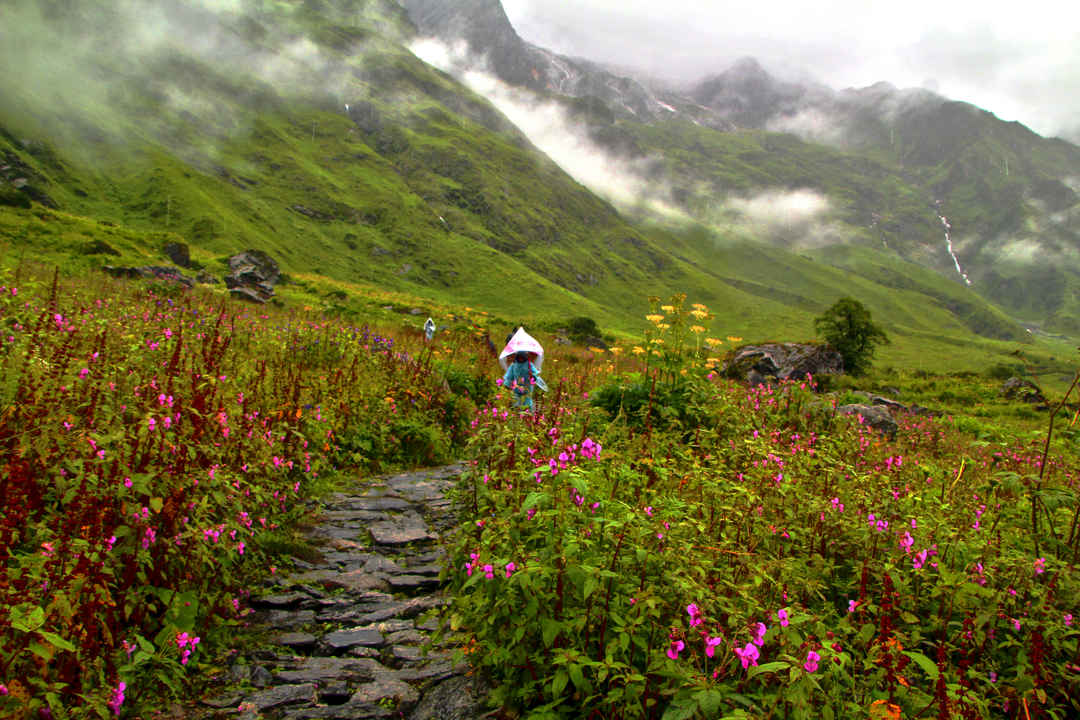
Where Legends Bloom: The History of the Valley of Flowers
Tucked deep in the Chamoli district of Uttarakhand lies a realm so vibrant and ethereal that it has inspired mythology, attracted explorers, and won global recognition — the Valley of Flowers National Park. While today it's known for its colorful meadows and well-curated Valley of Flowers tour packages, its history dates back to ancient folklore and daring discoveries.
A Valley Born of Legends
In Hindu mythology, the Valley of Flowers is believed to be the garden of Lord Indra. It is said that Hanuman, while searching for the Sanjeevani herb to save Lakshman, flew over this valley, captivated by its fragrance and beauty. Many spiritual seekers still believe the region holds divine energy.
Rediscovery by the West
Despite its mythological ties, the Valley remained relatively unknown to the outside world until 1931, when British mountaineers Frank Smythe, R.L. Holdsworth, and Eric Shipton stumbled upon it while returning from a successful Kamet expedition. Captivated by the blooms, Smythe later wrote a book titled "The Valley of Flowers," which drew global attention.
Later, in 1939, botanist Joan Margaret Legge came to the valley to study its flora. Tragically, she slipped from a cliff while collecting flowers and died. Her grave still rests within the valley, a silent testament to its allure.
From Hidden Gem to World Heritage Site
The area was declared a national park in 1982 and later, in 2005, was designated a UNESCO World Heritage Site for its unique alpine flora, which includes over 600 species of plants, many found nowhere else.
Valley of Flowers Trek Packages: Then & Now
Back in the early 20th century, visiting the valley was an endeavor for only the most adventurous botanists and mountaineers. Today, Valley of Flowers trek packages have made it accessible for nature lovers, families, solo travelers, and even senior citizens, thanks to better roads and comfortable stays in Ghangaria.
Tour operators like Tour My Holiday offer thoughtfully curated Valley of Flowers tour packages, which include:
-
Guided treks through the meadows
-
Accommodation at every stop
-
Meals and porters
-
Add-ons like Hemkund Sahib visits

Wrap Up Your Journey: Let the Valley Bloom in Your Heart
The Valley of Flowers trek is not just a trek—it's a living poem written by nature. From its mythical past to its stunning present, every trail here whispers beauty, silence, and wonder. Whether you're walking through a sea of blossoms, admiring snow-capped peaks, or discovering the rare Brahma Kamal, this trek will stay with you forever.
Plan smart with Tour My Holiday for the most friendly, guided, and budget-friendly experiences. From the best season tips to complete Valley of Flowers tour packages, we’ve got everything covered—including packages from Delhi, Rishikesh, Mumbai, and Haridwar. Ready to let nature embrace you?
Visit us now to book: www.tourmyholiday.com
Let your next unforgettable memory begin in the Valley of Flowers.
Frequently Asked Questions:
1. What is the Valley of Flowers famous for?
The Valley of Flowers National Park is famous for its vibrant alpine flowers, rare Himalayan flora, and stunning views — a UNESCO World Heritage Site.
2. What is the ideal season to visit the Valley of Flowers?
The best time to visit Valley of Flowers Uttarakhand is from mid-July to early September, when the valley is in full bloom.
3. How to reach Valley of Flowers from Delhi?
Book a Valley of Flowers tour package from Delhi or travel via train/bus to Rishikesh or Haridwar, then drive to Govindghat and start the trek.
4. What is the Valley of Flowers trek distance?
The trek from Govindghat to Valley of Flowers is around 17 km one way, divided into manageable stretches for all age groups.
5. Is the Valley of Flowers trek difficult?
The trek is of moderate difficulty, ideal for beginners with basic fitness. It includes steady ascents and scenic flat trails.
6. Can couples enjoy this trek?
Absolutely! Many travelers book our Valley of Flowers tour package for couples for a romantic nature escape amidst colorful landscapes.
7. How far is Rishikesh to Valley of Flowers?
The Rishikesh to Valley of Flowers distance is around 270 km, including the drive to Govindghat and the trek to the valley.
8. Is there a Valley of Flowers in Kashmir too?
Yes, Valley of Flowers Kashmir is another beautiful alpine region, but Valley of Flowers Uttarakhand is the more famous trek destination.
9. What’s included in the Valley of Flowers trek package?
Our Valley of Flowers trek package includes stay, meals, guide support, permits, and transfers from Delhi, Rishikesh, or Haridwar.
10. Are there fixed departures or guided tours available?
Yes! We offer Valley of Flowers guided tours and fixed departures from major cities to make your trip hassle-free and safe.
